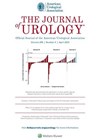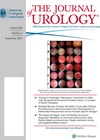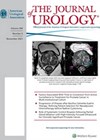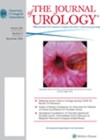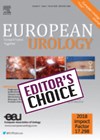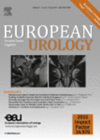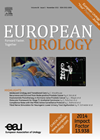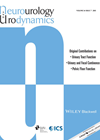
Journal Reviews
Can transcutaneous peroneal nerve stimulation treat OAB?
The peroneal nerve follows sacral, pudendal, and tibial nerves as a target for overactive bladder (OAB) treatment. This multicentre prospective randomised RCT compared a transcutaneous electrical neuromodulation system (eTNM) at-home treatment once daily for 30 minutes to solifenacin 5mg once...
Fear and frustration among women with recurrent UTIs
The risk of a women developing a urinary tract infection in her lifetime is over 50%, approximately 25% of which become recurrent (rUTIs). This study examined the viewpoints of women with rUTIs through six focus groups at a tertiary centre...
Standard versus expanded cultures to diagnose UTIs in women
Clinicians are well aware of the limitations of the so-called Kass criteria applied to standard urine culture (SUC) techniques as well as the limitations of empiric antibiotic prescribing for symptoms that are known to overlap with chronic conditions such as...
Cardiac failure and medical therapy for LUTS / BPH
Alpha blockers (AB), 5-alpha reductase inhibitors (5-ARI) and combination therapy are widely prescribed for lower urinary tract symptoms (LUTS) considered consequent to prostatic enlargement and are the mainstay of first-line therapy. This retrospective interrogation of a large population-based dataset of...
Assessing resolution of isolated hydronephrosis – is APPD superior to the SFU system?
Antenatal scanning detects urinary tract dilatation in 1-5% of pregnancies. Isolated hydronephrosis (i.e., that not due to secondary dilatation e.g. bladder dysfunction) is known to resolve or improve in most; some patients may, however, require intervention through deterioration of obstruction...
Vitamin D and LUTS
Lower urinary tract symptoms (LUTS) and vitamin D deficiency have been thought to be connected, but the association has been inconsistent. Vitamin D receptors have been identified in the bladder, prostate and pelvic floor muscles, and it has been linked...
Delayed decompression of the infected obstructed kidney increases fatality
Well, we know this, I hear you all say. It is standard practice that the obstructed kidney with associated infection requires prompt decompression, and this is drilled into all UK trainees. It is surprising therefore that although we frequently deal...
Prostatic artery embolisation versus sham
Randomised trials with use of sham is uncommon in the surgical literature, which makes this paper more interesting. Many different treatments are available for treating lower urinary tract symptoms / benign prostatic hyperplasia (LUTS / BPH). Prostatic artery embolisation (PAE)...
Performance of non-invasive tests in diagnosing BOO in men with LUTS
A large proportion of urology involves the treatment of bladder outflow obstruction (BOO) in men. Yet BOO in men is very difficult to accurately quantify with the only regular non-invasive test being uroflowmetry. Pressure flow urodynamics may be considered the...
The origins of urinary stone disease
This is a descriptive paper of micro CT scans of tubular mineralisation in 12 nephrectomy specimens. The authors noted that: in the small number of specimens examined, mineralisation started in the outer medulla and appeared to proceed distally along the...
Reviewing the evidence for TNS in neurogenic lower urinary tract dysfunction
Tibial nerve stimulation (TNS) is a recognised minimally invasive treatment option for bladder overactivity and non-neurogenic lower urinary tract dysfunction. In this systematic review, the role TNS can play in the management of neurogenic lower urinary tract dysfunction is evaluated...
Intermittent self-catheterisation
Intermittent self-catheterisation (ISC) is used in everyday practice for bladder dysfunction. This study from Southampton, UK presents a Cochrane review of different catheter designs, user satisfaction and incidence of urinary tract infection (UTI), etc. The following factors were looked at:...

